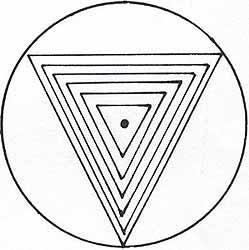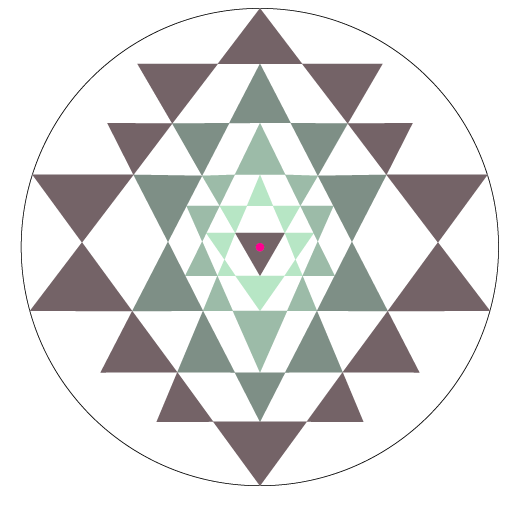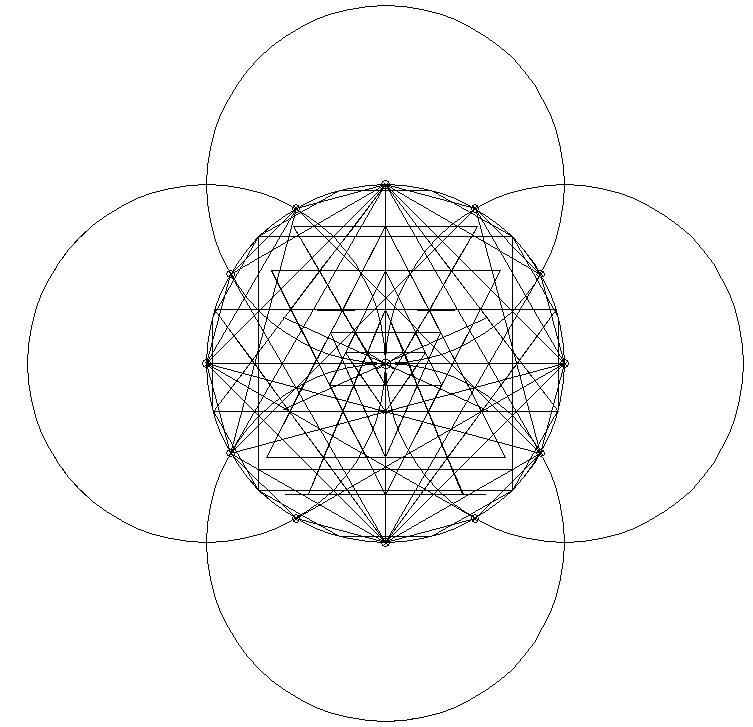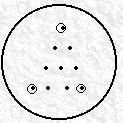The Sri Chakra or Shri Yantra of Tripura Sundari is a yantra or mandala formed by nine interlocking triangles surrounding the bindu. Four of these triangles are orientated upright representing Shiva or the Masculine. Five of these triangles are inverted triangles represent Shakti or the Feminine. Because it is composed of nine triangles, it is also known as the Navayoni Chakra.

Kali → goddess of eternal energy. The goddess of time and change. The ultimate reality.

 sri yantra guides
sri yantra guides
Together the nine triangles are interlaced in such a way as to form 43 smaller triangles in a web symbolic of the entire cosmos or a womb symbolic of creation. Together they express Advaita or non-duality. This is surrounded by a lotus of eight petals, a lotus of sixteen petals, and an earth square resembling a temple with four doors.[1]
The Shri Chakra is also known as the nava chakra because it can also be seen as having nine levels. Each level corresponds to a mudra, a yogini, and a specific form of the deity Tripura Sundari along with her mantra. These levels starting from the outside or bottom layer are:[1]
- Trailokya Mohana or Bhupara, a square of three lines with four portals
- Sarvasa Paripuraka, a sixteen-petal lotus
- Sarva Sankshobahana, an eight-petal lotus
- Sarva Saubhagyadayaka, composed of fourteen small triangles
- Sarvarthasadhaka, composed of ten small triangles
- Sarva Rakshakara, composed of ten small triangles
- Sarva Rohahara, composed of eight small triangles
- Sarva siddhi prada, composed of 1 small triangle
- Sarvanandamaya, composed of a point or bindu

The Sri Chakra (called the Shri Yantra) is the symbol of Hindu tantra, which is based on the Hindu philosophy of Kashmir Shaivism.
Vijnanamaya — spiritual body composed of prayer and fortified by meditation
Anandamaya — body of the joy of union with god
—he who realizes the truth of the body can then come to tknow the truth of the universe
Payodhi-jala — primordial waters, force of the manifested universe
A fourth dimension of aesthetic sense, where all is in ourselves, ourselves in all —Aurobindo
Tantra: analogies between the individual and the cosmos, and the life forces which govern them
reflections of what is taking place in real life and reminding thought visions of our true nature
